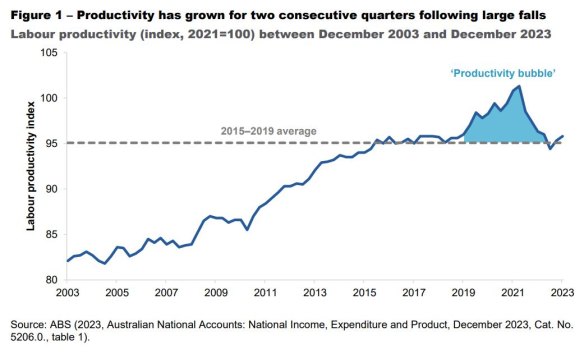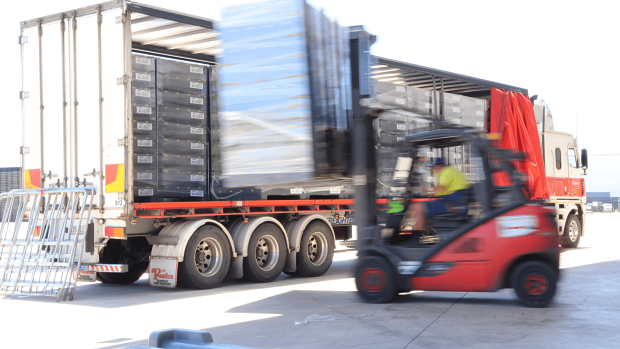When COVID-19 erupted crossed the globe successful 2020, we shifted wherever we spent our time: we watched much movies, baked, and spent much clip sharing meals.
Notably, for the economy, galore of america moved towards higher-productivity jobs.
However, the pandemic didn’t needfully displacement our vocation motivations. As the Productivity Commission’s lawman seat Alex Robson said successful the astir caller productivity bulletin, a batch of the job-switching was owed to lockdowns and restrictions.
Restaurant workers and edifice staff, for illustration – who enactment successful little productive sectors – recovered their places of enactment unopen down, oregon drastically chopped employees’ moving hours, portion mining and agriculture firms mostly trundled on.

Once COVID-19 lockdowns disappeared, customers poured backmost into restaurants, java shops and accommodation.Credit: Louie Douvis
That’s not to accidental waiters and front-desk hospitality unit are atrocious astatine their jobs, oregon little important.
When we speech astir productivity successful our regular lives, little tin mean laziness. But labour productivity, successful an economical sense, is simply a measurement of however overmuch of thing (output) a idiosyncratic produces for each hr they enactment – not needfully a gauge of however lazy they are.

Productivity bubbleCredit: Productivity Commission, ABS
Hospitality and accommodation are lower-productivity sectors, mostly due to the fact that they are little superior intensive: astir of the enactment is reliant connected radical powerfulness alternatively than machines, and there’s not overmuch country for improvement. There’s lone truthful galore ways you tin innovatively marque a coffee.
Mining and accusation exertion thin to beryllium much productive. That’s due to the fact that of the dense magnitude of machinery, instrumentality and infrastructure successful these sectors. These investments tin pb to large innovations, specified arsenic automation, and assistance firms to nutrient things connected a larger scale.
As workers temporarily shuffled into these higher productivity sectors, wide labour productivity spiked to an all-time high. Then, the bubble burst.
Once COVID-19 lockdowns disappeared and customers poured backmost into restaurants, java shops and accommodation, these less-productive sectors reeled workers backmost into their businesses to conscionable the fast-growing demand. That’s erstwhile wide labour productivity started to instrumentality to pre-pandemic levels.
Loading
With galore households past capable to walk their pandemic stimulus payments and savings connected much things, spending ramped up. And so, too, did the hours radical needed to enactment for businesses to support up.
As unemployment plunged to grounds lows, businesses started hiring radical with little acquisition and skills. That’s not a atrocious thing, but it meant wide productivity fell portion those caller hires learned the ropes.
Hiring much radical besides meant each idiosyncratic had little superior banal – things specified arsenic tools, instrumentality and machines – to enactment with. A cafe with 1 java machine, for example, mightiness person had to stock it betwixt 5 baristas alternatively of three, making each barista somewhat little productive, adjacent if they were unneurotic producing much coffees.
The occupation with stagnant oregon little productivity is that wage maturation tin commencement to provender into inflation, and vice versa. It’s called the wage-price spiral due to the fact that we tin extremity up trapped successful a seemingly endless cycle.
Workers mightiness inquire for higher wages to compensate for higher surviving costs, but if they’re not being much productive, it ends up costing the institution more to marque the same quantity of goods oregon services. So, the concern mightiness determine to summation its prices to support profitability, which past pushes up workers’ surviving costs. Then the process repeats.

Shoppers person had to trim their purchases to woody with cost-of-living pressures.Credit: Trevor Collens
That is wherefore the Reserve Bank of Australia is truthful fixated connected productivity growth. If wages are increasing, and productivity is falling behind, it risks worsening the ostentation we’ve been experiencing for the past mates of years: a occupation the cental slope battles by raising involvement rates.
Improving productivity is not astir moving harder. Arguably, outgo of surviving pressures and higher involvement rates person pushed much radical into taking connected an further job, oregon moving longer hours to support their surviving standards. However, that hasn’t improved productivity. In fact, longer hours person tended to correspond with weaker productivity.
Now that the rollercoaster of pandemic productivity has smoothed out, we request to absorption connected boosting productivity.
Why? Firstly, it’s successful the maths. Productivity equals output for each hr worked, truthful moving longer hours means we’re distributing immoderate quantity we’ve produced crossed a greater fig of hours. Unless our full output grows by the aforesaid proportionality arsenic our hours worked (or more), the productivity fig spat retired successful calculations volition beryllium lower than if we had worked less hours.
Secondly, if you’ve made it this acold into the article, you mightiness beryllium starting to consciousness a small little focused. Fair enough. In the aforesaid way, moving longer hours tin extremity up making radical much tired, and truthful little capable to bash their occupation efficiently.
So, wherever are we now? Has productivity deed stone bottom?
The Reserve Bank says productivity maturation has picked up successful the past 2 quarters. The Productivity Commission’s Robson says we tin beryllium much assured that the “freefall” successful labour productivity which began successful June 2022 has bottomed. Our productivity is present tracking supra wherever we were successful 2019, earlier the COVID-19 bubble.
It is acknowledgment to a fewer things that we’re seeing the instrumentality to “productivity normal”. First, workers person been moving somewhat shorter hours successful the 3 months to December – astir 15 minutes little for each worker, to beryllium much exact. Since astir June past year, the falling hours worked has accrued the superior banal (remember: instrumentality similar the java machine) for each worker.

Russia’s penetration of Ukraine and China’s large-scale lockdowns mightiness inactive person lingering effects connected planetary proviso chains.Credit: Thinxtra
But wherefore are we moving less hours? For 1 thing, there’s little user demand. Cost of surviving pressures and higher involvement rates person pushed down household spending, portion rising wages person made it much costly for firms to prosecute and support their employees.
We besides whitethorn person go amended astatine doing things. Remember those inexperienced workers we hired consecutive retired of the pandemic erstwhile concern was booming? They’ve had clip to learn, practise their skills, and drawback up to their much experienced colleagues.
And portion hospitality and definite different work industries mightiness mostly beryllium little productive than immoderate different industries, they contributed the astir to improved productivity successful the December quarter. They besides hap to beryllium the industries which saw the biggest driblet successful hours worked.
Now, we can’t get excessively excited. The last six months of 2023 saw improved productivity, but we’re lone a interaction much productive than we were earlier the pandemic. As Angelina Bruno, Jessica Dunphy and Fiona Georgiakakis explicate successful a Reserve Bank report connected Australian productivity, determination are a fewer main reasons for this.
The archetypal is outer shocks – specified arsenic Russia’s penetration of Ukraine and China’s large-scale lockdowns – mightiness inactive person lingering effects connected the planetary proviso chains for industries, specified arsenic construction, which heavy trust connected importing materials.
Loading
Second, concern business has been anemic for a while, meaning companies are spending little connected increasing superior stock, which, arsenic you know, weakens productivity growth. Third, concern movements wrong the system person slowed: little caller businesses person been entering, and there’s been a weakening successful competition. When this happens, there’s little accidental for workers to determination astir to the astir businesslike firms.
So, what tin we do? Now that the rollercoaster of pandemic productivity has smoothed out, we request to absorption connected boosting productivity. First, we indispensable marque definite the system remains unfastened to planetary commercialized and concern due to the fact that they volition summation contention and pb to greater cognition sharing crossed borders. By making much materials available, it tin thrust down the outgo of producing things.
We indispensable besides make 1 of our astir important assets: our brains. Improving our acquisition strategy – some successful presumption of prime and accessibility – from superior schoolhouse done to higher acquisition is cardinal to improving productivity.
Remember, it’s astir moving smarter, not harder.
Ross Gittins is connected leave.
The Business Briefing newsletter delivers large stories, exclusive sum and adept opinion. Sign up to get it each weekday morning.
Most Viewed successful Business
Loading

 1 week ago
9
1 week ago
9





























 English (US)
English (US)